Decoding Angkor Thom: A Deep Dive into its Iconic Temples for a Comprehensive Angkor Thom Temple Guide
June 16, 2023
Table of Contents
Decoding Angkor Thom: A Deep Dive into its Iconic Temples for a Comprehensive Angkor Thom Temple Guide
Angkor Thom Temple Guide
Introduction to Angkor Thom
Angkor Thom – a grand temple complex in Cambodia – has fascinated many historians and archaeologists. It served as the political center of the Khmer empire from the 12th to 17th century. Let’s take a closer look! Here’s a guide to the unique details of Angkor Thom’s temples.
Did you know that Bayon Temple has over 200 faces carved on its towers? National Geographic believes the faces represent King Jayavarman VII’s “compassionate” nature. Visiting the temples in Angkor Thom is like time-travelling. Ancient architecture meets modern-day selfie sticks!
Iconic Temples in Angkor Thom
To explore the iconic temples in Angkor Thom with a comprehensive approach, delve into the sub-sections that focus on each temple’s specific features. Bayon Temple, Baphuon Temple, Phimeanakas Temple, Terrace of the Elephants, Terrace of the Leper King, Preah Palilay Temple, and Preah Pithu Temple each have unique characteristics worth noting.
Bayon Temple
Explore Bayon Temple and its 37 towers each facing in four directions. Admire the mythological carvings and learn about its significance with a knowledgeable tour guide. For an even more incredible experience, visit during sunrise or sunset as the sun rays create beautiful, photogenic views. For an even older experience, try Baphuon Temple – older than your grandma and likely in better condition!
Baphuon Temple
Walking Angkor Thom, one cannot miss the Baphuon Temple. Built in the 11th century as a representation of Mount Meru, it is dedicated to the Hindu God Shiva. Towering arches and intricate carvings display exquisite Khmer craftsmanship. A massive reclining Buddha statue greets visitors.
At 34 meters high, Baphuon Temple is one of the tallest structures in Angkor Thom. Its restoration took over 50 years. How it was built with simple tools of his time is a mystery.
Legend has it King Jayavarman VII requested his ashes be placed in the temple. Bone fragments have been discovered, but they remain unverified.
As we explore Angkor Thom’s temples, their unique qualities and cultural significance astound us. Phimeanakas Temple is the ultimate stairway to heaven – or into the jaws of death!
Phimeanakas Temple
Phimeanakas, situated in the heart of Angkor Thom, is an 800-year-old symbolic temple. Its name translates to ‘celestial temple‘ and it was believed to have been the royal residence of the Khmer king.
As you enter Phimeanakas, its grandeur is clear. The impressive architecture, intricate carvings and statues show why it was once so important. The pyramid-like structure represents Mount Meru – a mythical mountain at the center of all universes.
This small temple has plenty to offer. Climb the steep stairs to the top and witness views of Angkor Thom. You can also observe mythical animals carved into the walls.
At night, Phimeanakas is lit up with artificial lights. This gives an ethereal look to everything surrounding it.
Overall, Phimeanakas Temple provides insight into the incredible history and mythology of Cambodian temples. It’s perfect for anyone interested in Southeast Asian culture! Finally, here you can hang out with elephants without judgement.
Terrace of the Elephants
The Terrace of the Elephants is a sight to behold! It’s located in Angkor Thom and was built for King Jayavarman VII. It’s 350 meters long and is adorned with sculptures of elephants and garudas.
The intricate carvings on the elephant statues are astounding. They depict warriors, dancers and even monkeys! Stand on the terrace or view it from afar – either way you’ll be impressed.
The spouts at both ends of the terrace are an enigma. Shaped like lions, it’s believed they were used for royal announcements.
Take your time exploring each level in detail. Admire the architecture and listen to expert guides share fascinating historical facts. You’ll gain insight into Cambodia’s past and feel better about your own skin issues!
Terrace of the Leper King
The Terrace of the Leper King is a mysterious structure found in Angkor Thom, Cambodia. It was believed to be where King Jayavarman VII, from the Khmer Empire, would watch military parades. It’s called the Leper King because of a statue on its central wall with discolored limbs.
The Terrace stands out from other temples in Angkor Thom, with intricate carvings and bas reliefs decorating its walls. These carvings represent a mix of spiritual and earthly motifs. The central statue may also be a reference to Buddhist teachings about illness and suffering as part of spiritual growth.
Interestingly, it is thought that the original statue was removed in 2006 for restoration. That means that the sculpture visitors see today is not the original.
Preah Palilay Temple
Amid Angkor Thom’s iconic temples lies Preah Palilay Temple. Smaller than the rest, it has intricate carvings on its walls. Located atop a hill, visitors must climb steep stairs and go through dense foliage to reach it. This 13th century structure is a testament to Khmer craftsmanship and culture.
Preah Pithu Temple is another marvel. The intricate carvings are outdone only by the number of tourists trying to take the perfect selfie.
Preah Pithu Temple
Discover Preah Pithu, one of the most awe-inspiring temples in Angkor Thom. Boasting a unique architectural style, it is comprised of four small shrines dedicated to Buddhism. Intricate carvings and tall pillars transport visitors to the past, giving a glimpse of ancient Khmer civilization.
Walk through the majestic gateways and be entranced by beautiful bas-reliefs depicting Khmer mythology. Inside, explore four interconnected shrines honouring the Buddha and his life journey. Each temple is uniquely decorated with ornate carvings and detailed windows and doors.
Preah Pithu stands out for its tranquil atmosphere and seclusion from the throngs of tourists. Away from the main Angkor Thom area, it offers a peaceful retreat for those seeking solace or a place to reflect.
Pro Tip: Visit early in the morning or late afternoon to have an intimate experience with this stunning temple – and avoid the crowds.
-
Angkor Wat Tours
Explore Angkor with Bayon Temple and the world-famous Ta Prohm (Tomb Raider) Temple
20$ Add to cartRated 0 out of 5
Comprehensive Guide to Exploring Angkor Thom Temples
To get the most out of visiting the temples in Angkor Thom, you need a comprehensive guide that covers everything you need to know before you arrive. This guide is your solution with tips on the best time to visit, how to get there, ticketing and pricing, guided tours, dress code and etiquette, exploring the temples, and tips for taking photos.
Best Time to Visit
November to March is the perfect time to experience the wonders of Angkor Thom. With clear skies and stunning sunsets, you’ll be glad you chose this period! Wear comfy shoes and light clothing; and don’t forget to bring a guide.
An interesting fact I learnt during my visit is that this area used to use silk as currency! A reminder of its past significance in the global trade system.
Angkor Thom will leave you in awe. With its majestic monuments and historic stories, it’s an experience you don’t want to miss! So choose a route that avoids the crowds, and enjoy a temple run like never before!
How to Get There
Heading to Angkor Thom? Here’s a guide!
Fly into Siem Reap International Airport.
Hire a tuk-tuk or taxi.
Buy an admission pass.
Follow signs to the temple.
Be ready for hot and humid conditions.
Other temples like Ta Prohm and Preah Khan can be visited with the same pass, valid for 3 days.
Legend has it that there were over 1 million people living in the city during its peak. It was one of the biggest cities in pre-industrial times.
Exploring Angkor Thom won’t break the bank, but sadly you can’t take home the cute monkeys.
Ticketing and Pricing
Exploring the Angkor Thom Temples is an adventure – but before you set out, you need to prepare! Ticketing and Pricing are the first items to consider. Ticket prices vary based on the tour, and here’s a guide to help you understand the costs:
| Ticket | Price |
|---|---|
| One-day pass | $37 |
| Three-day pass | $62 |
| Seven-day pass | $72 |
If you intend to visit multiple temples over different days, getting a 3-day or 7-day pass will be more economical. A 1-day ticket may not be enough if it’s your first time visiting, or if you have a long list of must-see temples.
It’s also important to note there is an extra fee when hiring a guide. Yet, it’s beneficial to hire one as they can provide valuable historical information and help you navigate the complex. Plus, you can find guides speaking many languages. Some travellers prefer finding a stranger inside the tourist spot and hiring them as a guide, instead of joining crowded groups.
In conclusion, research your trip before making any decisions. Consider the cost, but don’t forget to invest in quality experiences too. Join a guided tour of the Angkor Thom Temples and let someone else get lost for a change!
Guided Tours
Exploring Angkor Thom Temples is a must. Check out the various types of tours and their details below:
| Type of Guided Tour | Duration (hours) | Cost (USD) | Availability |
| Private Guide Tour | 6-8 hours | 100-150 USD | Daily |
| Budget Group Tour | 4-8 hours | 15-24 USD/person | Daily except on public holidays |
| The prices and availability might be different depending on the season and service provider. It’s advisable to make prior arrangements in peak season. | |||
Private tours are personalized and custom-made. They also give plenty of time to explore. Group tours are budget-friendly and provide engaging interaction with other travelers.
Angkor Thom’s Temple is huge, grand and has an amazing architectural style. It was discovered by chance in the late nineteenth century since it was covered under dense vegetation.
Don’t forget to leave your flip-flops at home; you wouldn’t want to step on a centuries-old curse!
Explore Angkor with Bayon Temple and the world-famous Ta Prohm (Tomb Raider) Temple
Dress Code and Etiquette
When visiting Angkor Thom temples, it is essential to follow a dress code and etiquette practices. This respect for Cambodia’s culture and traditions will give you an unforgettable experience and show consideration for the local community.
Wear modest clothing that covers the shoulders and knees. Don’t wear hats or shoes inside temple buildings. Avoid touching or climbing on sculptures or architecture within the sites.
When taking photos, remember to get monks’ consent first. This shows proper respect for their customs.
Angkor Thom was an ancient magnificent city at the center of Khmer Empire’s power. It was a symbol of prosperity in Southeast Asia, reaching its peak during Jayavarman VII reign. Even with time-caused damages to some parts, it still stands as an inspiring testimony to Cambodia’s cultural legacy.
Exploring the temples may leave you feeling like Indiana Jones. However, instead of treasures, you’ll get sweat stains.
Exploring the Temples
The temples of Angkor Thom are a reminder of the Khmer architecture’s grand history. Exploring these incredible structures is a journey back in time! Every temple has its own unique tale to tell.
Start your journey at the South Gate – a great feat of engineering. Gaze in wonder at the peaceful Bayon Temple, with its stone Buddha faces. Then, take in the magnificence of the Terrace of the Elephants, with its old Khmer designs. The mysterious Baphuon Temple awaits exploration.
Don’t forget some of the lesser known places too – like Preah Palilay temple and Prasat Chrung. These will give you a glimpse into 1000 years of Cambodian culture.
Pro Tip: Visit early to beat the crowds, and take the perfect shot. Aim for the temples, avoid the tourists, and always remember to bribe the monkeys!
Tips for Taking Photos
To capture the beauty and essence of Angkor Thom temples, perfect photos are essential. Here are some tips for taking stunning pics:
- Choose the right time: Morning or late afternoon light is ideal.
- Have a plan of what you want to capture.
- No flash – it can damage the artwork.
- Use a tripod for stability and sharpness.
- Take wide-angle shots and close-ups with details.
- Include people for a sense of scale and life.
Keep your distance from the temple surfaces. To enhance your photography, take a workshop or class. It’ll help with composition, lighting and techniques like exposure compensation.
These tips will ensure unforgettable memories. Enjoy clicking! Sunblock and water bottle are must-haves to beat the heat!
History and Architecture of Angkor Thom Temples
To understand the history and architecture of Angkor Thom temples effectively, you need to explore it in-depth, along with the Reign of King Jayavarman VII. Understanding the unique architectural features and the symbolism behind the temple designs is also essential. Additionally, taking a look at the conservation and restoration efforts put in to keep the temples intact would make for a comprehensive Angkor Thom temple guide.
The Reign of King Jayavarman VII
King Jayavarman VII reigned over the Khmer Empire from 1181 to 1218, covering modern-day Cambodia and parts of Thailand. He is renowned for his contributions to art, architecture and religion, particularly his love of Buddhism. His most famous work is the Angkor Thom temple complex.
The Bayon Temple is the centerpiece of Angkor Thom. It has 54 towers, each adorned with four serene faces, symbolizing compassion, wisdom and strength. Its intricate carvings depict mythological motifs and scenes from everyday life in the Khmer Empire.
What makes Angkor Thom so unique is its urban planning. It has huge walls to protect it from invaders and a complex system of canals and reservoirs to supply water to its residents. This enabled agriculture, leading to prosperity.
The legacy of King Jayavarman VII lives on, with the roads he commanded still in use after eight centuries. These roads connected several provinces and strengthened economic trade between India and China. This helped to enhance Cambodia’s international standing.
Unique Architectural Features
Angkor Thom Temples are a wonder of ancient architecture. Let’s discover what makes the design so special! There are giant stone faces intricately carved into the towers, said to depict Avalokiteshvara or Jayavarman VII. The temples mix elements from multiple religious and cultural backgrounds with carvings of Hindu mythology and Buddhist scriptures, plus images of 13th century Angkor. Trees have also grown inside the ruins – a signature feature of this majestic site. The temple grounds are enclosed by long walls and moats crafted from laterite and mud. Plus, the grand courtyards were once filled with people for ceremonies and devotional practices.
There’s much more to discover at Angkor Thom. Look out for the different decoration motifs or how sections are designed to guide movement. If you’re visiting soon, take your time exploring the open temples, arrive early and get a knowledgeable guide. With these tips and a look out for Angkor Thom’s unique architectural features, you’re sure to have an amazing experience!
Symbolism and Meaning Behind the Temple Designs
Bayon, Baphuon, and Phimeanakas are the three temples of the Angkor Thom complex. Each temple has a unique symbolism. For example, Bayon has faces representing 54 gods in Hindu Mythology. Baphuon has a reclining Buddha statue depicting an idea of a heavenly afterlife. Whereas, Phimeanakas has a golden tower linked to Hindu divinity.
The complex also features cosmic elements such as alignments with stars during solstice and equinox. This reflects the Khmer Empire’s focus on cosmology and religion, as well as elaborate royal court rituals. The temples show a mix of both Buddhist and Hindu beliefs due to Jayavarman VII, the ruler of the area, having roots in both.
Smithsonian Magazine reported that Jayavarman VII dedicated his reign to healing the damage from conflicts. This peaceful and tolerant approach towards different religions is seen in the symbolism of the temples. From carvings to towers, these monuments show a combination of history and ancient beliefs.
Restoring temples of this age requires a careful process. It involves keen observation, patience, and maybe even some duct tape!
Conservation and Restoration Efforts
The Angkor Thom temples offer a mesmerizing journey through history. To keep these ancient monuments intact, conservation and restoration have been key. Ancient techniques, modern technology, and high-res drone imagery are all being used to piece each temple back together. Local artisans are hired and trained in both traditional and new methods to help with the work.
However, in 2013 a crane accident resulted in parts of the Bayon Temple being crushed. This serves as a reminder of how dangerous the work can be. Therefore, ambition must be balanced with caution to protect the beauty of history for future generations.
Conclusion: The Wonders of Angkor Thom Temples.
Angkor Thom’s temples are truly awe-inspiring. They have intricate details that tell stories, making them a hotspot for tourists from all around the world. Exploring these temples takes you on a journey back in time to when the ancient Khmer Empire was alive.
The beauty of its iconic temples, like Bayon and Baphuon, have won the hearts of many. The stunning carvings show the skill of the craftsmen from those days.
Not only do these temples showcase the wealth and power of Cambodia’s past, but also its religious importance. Many of the complex’s parts served as places of worship for Hinduism and Buddhism. While exploring Angkor Thom, you can feel a sense of peace in every corner.
King Jayavarman VII built most of these temples nine centuries ago. He wanted to show the people his devotion to religion and his grandiose constructions to symbolize his power.
Angkor Thom Temple Guide – Frequently Asked Questions
What is Angkor Thom and why is it important?
Angkor Thom is a vast temple complex located in Cambodia, built by the Khmer Empire in the 12th century. It is famous for its intricate architecture, breathtaking sculptures, and stunning murals. Angkor Thom is important because it bears witness to the magnificent legacy of Khmer civilization and represents a unique blend of Hindu and Buddhist cultures.
What are the main attractions at Angkor Thom?
It’s just like walking into a scene from an Indiana Jones movie! Among the innumerable miracles, there are four that particularly stand out:
- The Bayon Temple is famous for the 216 mysterious faces that have been etched into the towers of its stone structure.
- The Baphuon Temple, which is a mountainous temple complex, alludes to the splendor of the Khmer kingdom.
- The carvings on the Terrace of the Elephants are a sight to behold. King Jayavarman VII once used this platform as a vantage point from which to observe his victorious army.
- A mysterious terrace that is covered with beautiful and elaborate carvings, known as the Terrace of the Leper King.
How long does it take to explore Angkor Thom?
It is recommended to spend at least one full day exploring Angkor Thom. However, visitors with a keen interest in the temples’ history, architecture, and art may need two to three days to explore the complex thoroughly.
Is it necessary to hire a guide to visit Angkor Thom?
While it is not necessary to hire a guide, it is highly recommended as they offer valuable insights into the history, legends, and symbolism of each temple. Guides can also help visitors navigate the complex and avoid crowds during peak hours.
If we only had one day to explore the temples of Angkor Thom, could you propose a suggested itinerary for us?
Certainly, let’s embark on a voyage into the past! Begin your exploration with the South Gate, which serves as the entrance to a bygone age. Imagine the awe-inspiring faces carved into the stone, greeting you with their everlasting smiles as they bid you welcome. Your journey across Angkor should start with the Bayon temple, which serves as the city of Angkor Thom’s beating heart. Take a break for lunch and some much-needed R&R before continuing to the Baphuon Temple. Make sure to save time to visit the Terraces of Elephants and the Leper King. It’s almost like going back and forth in time, right?
Are there any dress codes or restrictions for visitors to Angkor Thom?
Visitors are required to dress modestly when visiting Angkor Thom. Shorts and revealing clothing are not allowed, and visitors must cover their shoulders. Smoking and littering are strictly prohibited in the temple complex, and visitors must adhere to the rules strictly.
What is the best time to visit Angkor Thom?
The best time to visit Angkor Thom is during the dry season, which runs from November to April. The weather is dry, sunny, and pleasant, making it an ideal time to explore the temple complex. However, visitors should expect crowds during this period, especially during the peak season of December and January.
Mattia
Recent Post
Get 30% Discount Now
Categories
Guided Tours

Private Siem Reap Airport SAI Transfers – Siem Reap Airport Pick-up or Drop-off, Just for You!
From: 30$
Shared SAI Siem Reap Airport Transfer – We depart every 1 hour!
From: 9$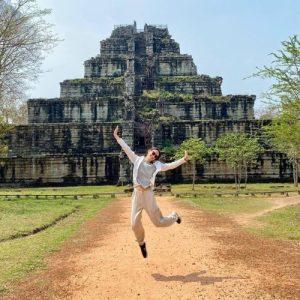
Private Full-Day Siem Reap to Koh Ker & Beng Mealea Temple Tour
From: 75$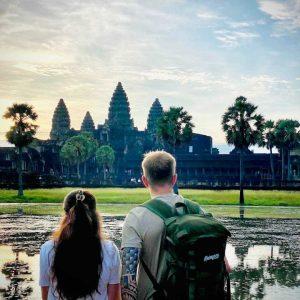
2-Day Angkor Wat Sunrise & Banteay Srei Grand Tour – Small Group Tours
From: 30$
2-Day Angkor Wat Temple Sunset and Floating Village Tour
From: 40$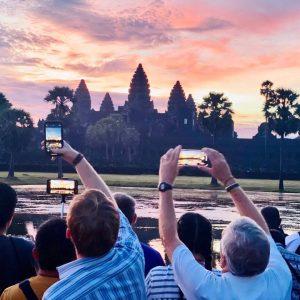
3-Day Angkor Wat Sunrise, Banteay Srei and Floating Villages Tour – Small Group Tours
From: 50$
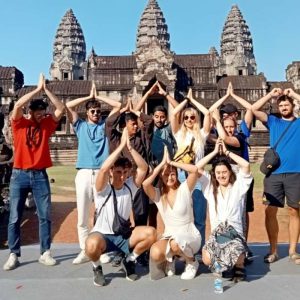
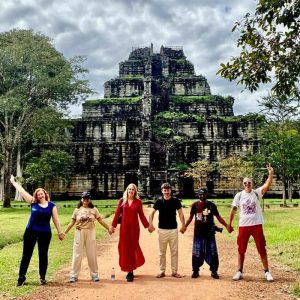
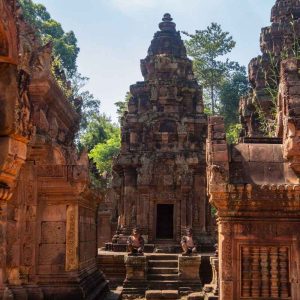
 by
by